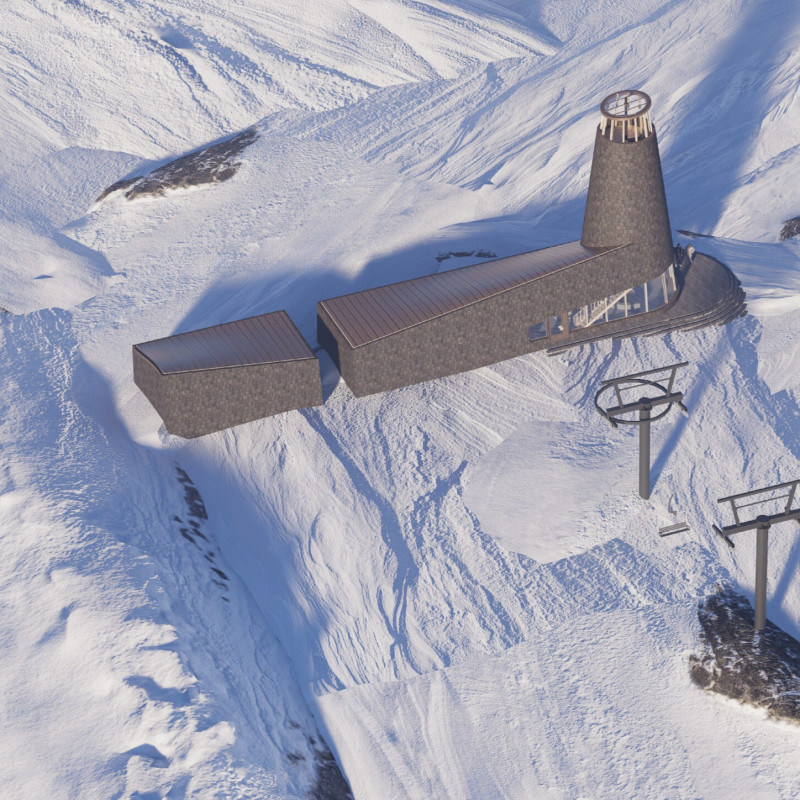5 key facts about this project
The architectural design embodies a blend of public and private spaces, facilitating diverse interactions among users while addressing practical needs. The primary function of the project is to provide a multifunctional space that accommodates various activities, including community gatherings, educational programs, and recreational use. This design decision reflects a keen understanding of contemporary societal trends, where flexibility and adaptability in public spaces enhance community engagement.
The overall concept revolves around open spaces that promote social interaction, with an emphasis on transparency through strategic use of large windows and open layouts. These elements invite natural light into the interior, creating a welcoming environment that encourages exploration and connection among visitors. The choice of materials further enhances the visual appeal while ensuring longevity and sustainability.
Key materials used in the construction include reinforced concrete, which provides structural integrity; glass, which allows for light penetration and visual permeability; and locally sourced timber, which adds warmth and a natural aesthetic. The careful combination of these materials not only reflects an appreciation for tactile experiences but also underlines the project's commitment to sustainable practices by utilizing resources that minimize environmental impact.
Unique design strategies are evident throughout the project, such as the incorporation of green roofs and vertical gardens that contribute to ecological balance and biodiversity within the urban landscape. These features not only improve air quality but also enhance the aesthetic qualities of the architecture, creating a pleasant environment for both inhabitants and wildlife. Additionally, the design embraces energy-efficient systems, employing solar panels that support the project's energy needs, thereby fostering a sense of responsibility towards environmental stewardship.
The spatial organization within the project is intentional, with clearly defined zones that cater to different uses while allowing for seamless transitions between areas. Public spaces are designed to be fluid, merging indoors and outdoors, promoting an inclusive atmosphere that welcomes community participation. The strategic placement of communal areas facilitates interaction, while quieter zones provide necessary privacy and respite.
In terms of circulation, the layout ensures accessibility for all users, with clear pathways that guide visitors through the space. This attention to movement within the design reflects an understanding of human behavior in public environments, enhancing usability and comfort.
The surrounding landscape complements the architectural design, integrating natural elements that enrich the user experience. Pathways, seating areas, and gardens have been thoughtfully designed to extend the use of the project outdoors, offering a sanctuary amidst the urban environment. This synergy between the architecture and landscape is a testament to the thoughtful consideration given to the project’s context, aiming to create a cohesive experience for all who visit.
As you explore the various aspects of this project, consider delving into the architectural plans to appreciate the layout and functionality of the space. Reviewing the architectural sections will provide insights into the design's vertical relationships, while examining the architectural designs will highlight the overall aesthetic vision. The architectural ideas that underpin this project demonstrate a commitment to fostering community and enhancing urban life, inviting you to connect with the details that make this initiative a noteworthy addition to the architectural landscape.


























